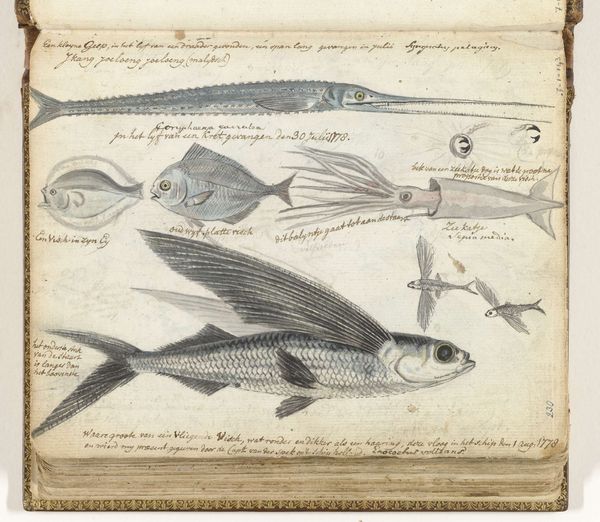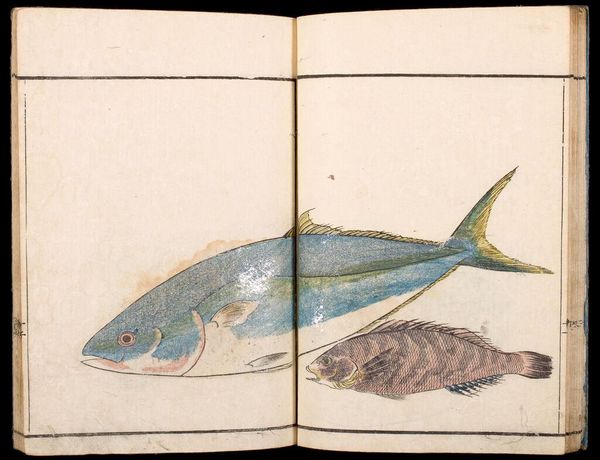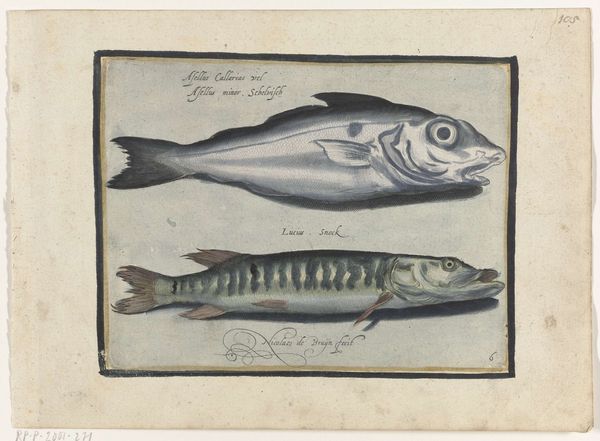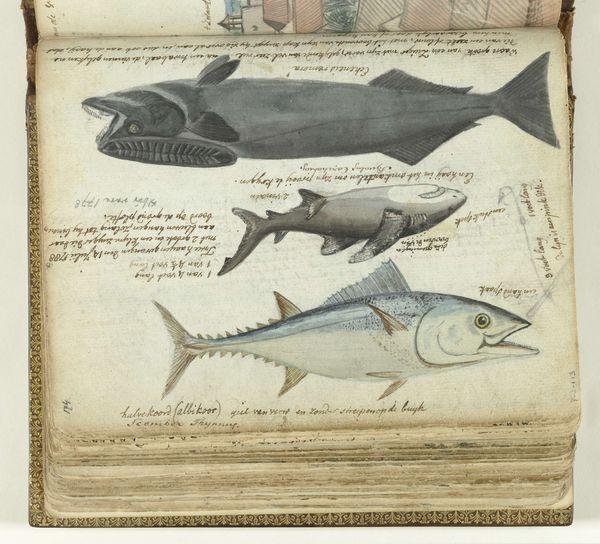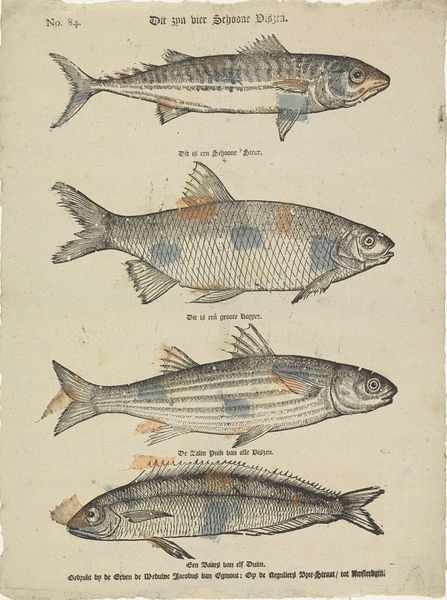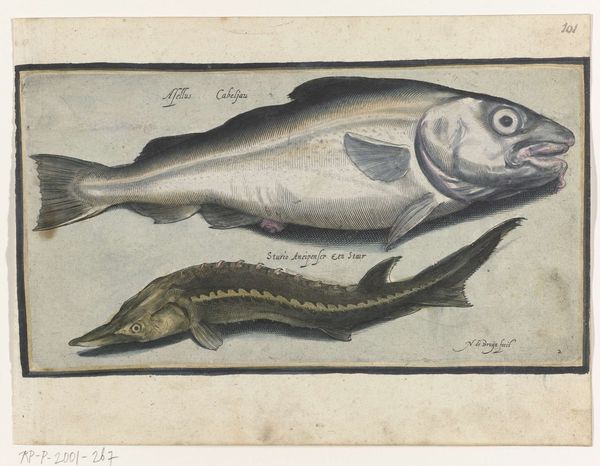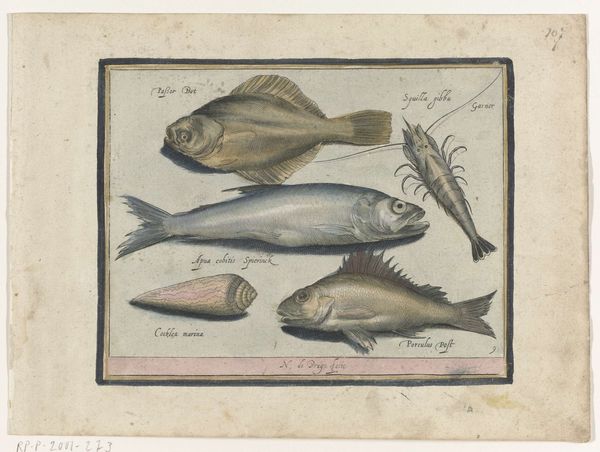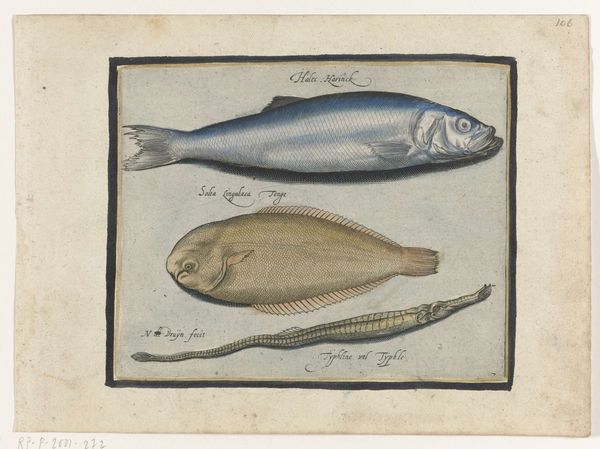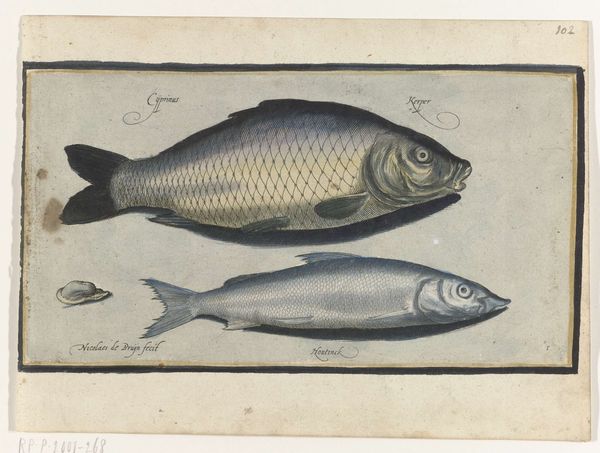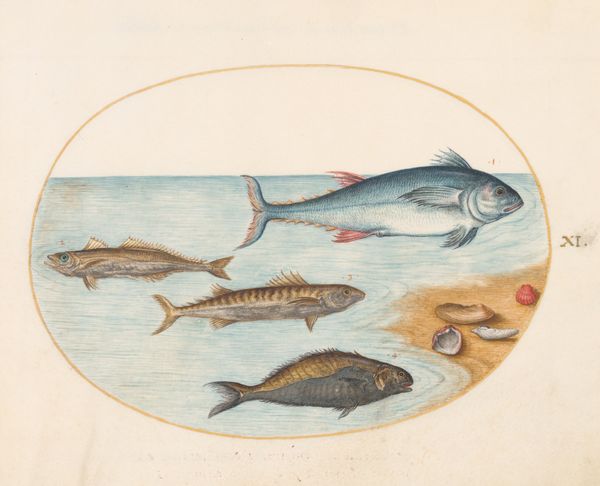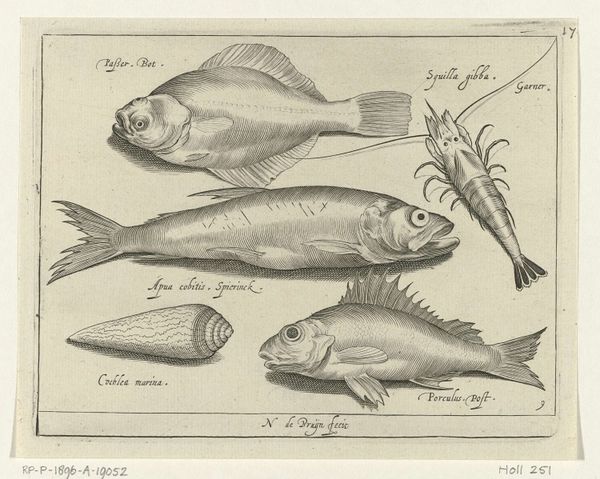
drawing, paper, watercolor, ink
#
drawing
#
paper
#
watercolor
#
ink
#
coloured pencil
#
15_18th-century
#
genre-painting
Dimensions: height 155 mm, width 195 mm
Copyright: Rijks Museum: Open Domain
Curator: Let's discuss Jan Brandes' drawing titled "Zeevissen," dating from around 1778-1779. It's a fascinating example of natural history illustration using ink and watercolor on paper. Editor: Immediately, I'm struck by the colour palette. That vibrant blue contrasting against the parchment yellow creates such a vivid marine world right here in this book. The way the watercolor bleeds suggests movement. Curator: The illustration style places it within the tradition of scientific expeditions popular at the time. Think of the voyages of exploration—recording newfound flora and fauna became quite fashionable, both for scientific purposes and for public spectacle back in Europe. Editor: I see. It makes me think about this meticulous style; look at each scale depicted. But tell me, wouldn't these illustrations reflect a certain worldview? Maybe even colonial ambitions, like appropriating and documenting nature's resources? Curator: Exactly. Works like "Zeevissen" were integral to establishing taxonomies that were then employed by expanding empires, a tool for the natural sciences in service of state power. And it's clear how artistic styles shaped data interpretation at that time. Editor: True. The formal composition creates a hierarchy of fishes. I can also see an awareness in terms of lines, colours, contrasts to depict details with simple means. Even today, its aesthetic coherence persists. Curator: It also illustrates the way in which travelogues and illustrated records boosted the exotic and strange for an eager European audience, constructing perspectives. What this work shows so powerfully is how something seemingly innocuous contains such cultural layers. Editor: A small drawing holding grander stories. Well, considering the vivid immediacy it preserves, its precise details, “Zeevissen” really gets my imagination hooked. I found it to be an excellent exercise in combining art with objective representations.
Comments
No comments
Be the first to comment and join the conversation on the ultimate creative platform.
